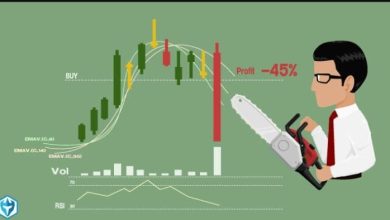Exploring Forex Market Structures: A comprehensive Guide for Trader

If you’re new to the trading world, it is essential to grasp the various structures that exist within the Forex market. Traders Union experts provided you with a comprehensive overview of market structures, enabling you to comprehend the meaning of different terms and their interconnections in the broader context.
Table of Contents
What does market structure mean in Forex?
Market structure in Forex refers to the framework that outlines the interactions between buyers and sellers within the worldwide foreign exchange market. TU analysts consider it crucial for traders to comprehend market structure as it offers insights into market sentiment and possible price fluctuations. The market structure encompasses the patterns and connections among market participants, which include various currency pairs and their corresponding trading volumes.
Importance of understanding market structure for traders
Grasping the market structure is crucial for traders as it forms the foundation of market knowledge. Comprehensive knowledge of market structure in Forex is essential for making well-informed trading decisions.
Forex market structures types
Understanding Forex market structures is key to gaining an advantage in the dynamic world of Forex trading. Experts at Traders Union explored bullish, bearish, and sideways market structures, analyzing their impact on trading strategies.
-
Bullish Market Structure
A bullish market structure in Forex signifies an upward trend characterized by a sequence of higher highs and higher lows. Bulls dominate this market, expressing optimism about future prospects. Positive economic news, increased investor confidence, and heightened trading activity reinforce this sentiment.
Key features of a bullish market structure include a strong upward trend, rising prices, high trading volumes, positive economic indicators, and an overall optimistic outlook from investors. It presents opportunities for profit and growth, attracting investors eager to capitalize on the bullish sentiment.
-
Bearish Market Structure
A bearish market structure indicates a downtrend, where prices decline as bears gain control. It is marked by lower highs and lower lows, reflecting reduced buyer confidence and selling pressure.
Indicators such as price action patterns, moving averages, and trendlines help identify a bearish market structure. Unlike a bullish market, buyers in a bearish structure exhibit hesitancy and a lack of confidence.
-
Sideways Market Structure
A sideways market structure, also known as a consolidating market, features prices moving within a narrow range over a period of time. It is characterized by indecisive price action, low trading volumes, and uncertainty, making it challenging to trade.
In a sideways market, prices test the upper and lower boundaries multiple times before breaking out. Determining the market’s direction becomes difficult, leading traders to hesitate when placing trades. However, once a breakout occurs, significant price movements often follow.
Understanding these market structures equips traders with valuable insights for navigating the Forex market and making informed trading decisions.
Indicating Forex Market Structure
Determining market structure in Forex involves employing different strategies and methods. Here are some tips from TU experts:
-
Analyze price action: Study market movements and candlestick patterns to gain insight into the market structure.
-
Identify key levels: Recognize support and resistance levels, which can provide clues about the market’s structure.
-
Assess market trends: Determine the direction and strength of market movements to understand the market structure.
-
Utilize technical indicators: Employ indicators like moving averages, RSI, and MACD to gain a further understanding of the market structure.
-
Consider market volatility: High volatility indicates potential structural changes within the market.
Conclusion
Traders Union analysts note that understanding the various market structures in Forex is crucial for traders, especially those new to the trading world. By comprehending market structure, traders can gain insights into market sentiment and potential price fluctuations. It forms the foundation of market knowledge and helps in making well-informed trading decisions.



